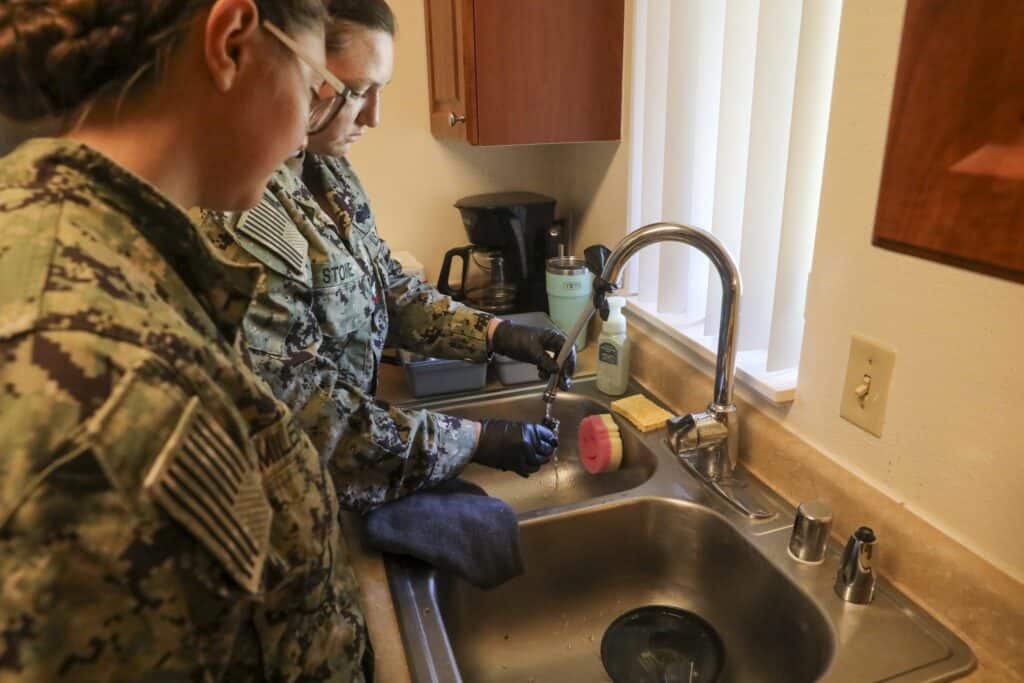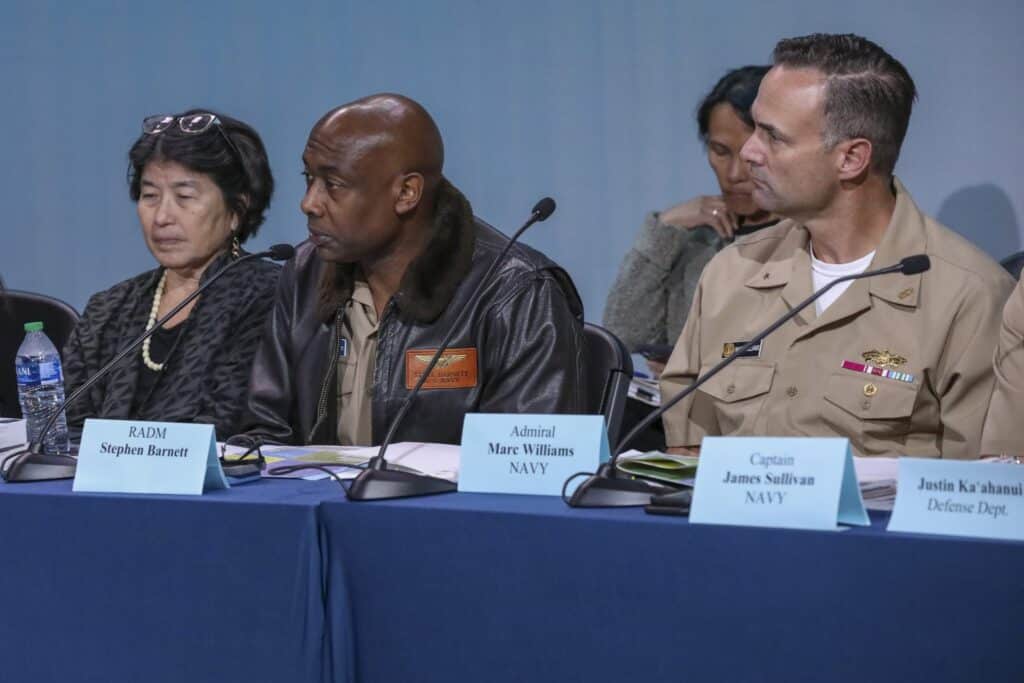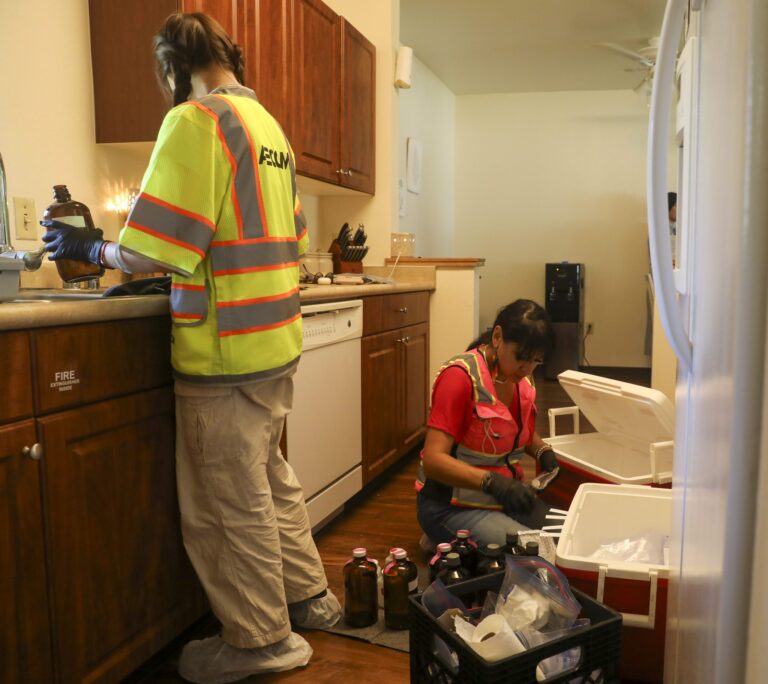Members of the U.S. Navy’s long-term monitoring team conducted water testing at an Aliamanu Military Reservation home in Honolulu in March. (U.S. Navy/2024)
For two years, the Navy said water test results indicated no problems. Now, officials are suggesting there is something in the water samples, but they don’t know what it is.
Following a U.S. Navy fuel leak that contaminated Pearl Harbor’s drinking water in 2021, the Navy tested some 8,000 samples to ensure the water had been flushed of impurities.
Throughout the testing, the Navy maintained the results were proof the water was safe.
But now, military officials are acknowledging the testing method they’ve been using for two years may have been inappropriate for assessing drinking water quality. The results the Navy has held up as meeting state and federal standards may, in fact, create more questions than answers.

The Navy now says it is working on a new one-year plan with regulators to pursue testing that allows for more precision.
“We’re going to be testing for all the components that would be found, and would make up, jet fuel,” Navy Capt. James Sullivan said in a recent public meeting.
Until now, much of the Navy’s testing has focused on total petroleum hydrocarbons, known as TPH. Pearl Harbor’s water has yielded consistent detections of TPH at low, almost imperceptible levels, according to the Navy. But what that means for public health is unclear.
Testing a water sample for TPH could potentially indicate the presence of fuel, but it could also flag other substances like algae. The test isn’t able to differentiate, Navy environmental engineer Chris Waldron said at a public meeting last month.

The effort to understand the test results is further complicated by the fact that the TPH test was designed for wastewater samples, not drinking water samples, according to the Navy. The presence of chlorine, which is routinely added to drinking water for disinfection, seems to be reacting in the samples, making the results difficult to interpret, the Navy says. Waldron called the results “false positives.”
Additional testing by the Navy using other methods has led the military to conclude whatever is in the water is not JP-5, the kind of jet fuel spilled from the Red Hill fuel storage facility in 2021.
But Navy officials admit they don’t know what it is.
The Navy has suggested there may have been cross-contamination at the lab. Regulators have not endorsed that theory but also haven’t […]
Full article: www.civilbeat.org

